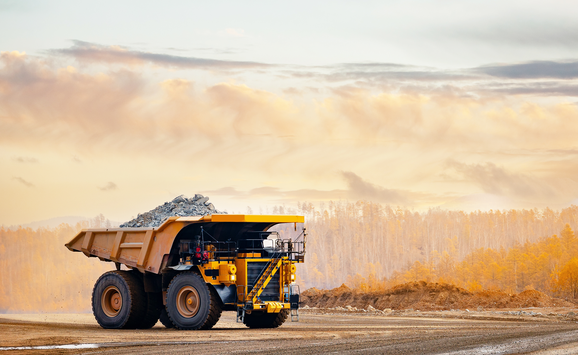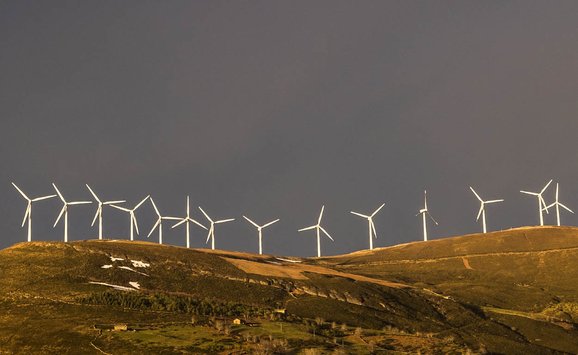How quickly questions that seem academic can come to affect the conduct of business and government was brought home in the fight over continuation of the supersonic transport (SST) program that helped confound the final days of the 91st Congress. While it is usually hard to say why a given legislator votes yes or no on a given issue, and considerations of noise and doubtful economic merit were the most prominent issues ventilated, the possibility that a future fleet of SSTs could conceivably affect the climate of the world, or at least part of it, provided added ammunition to convince 52 senators to turn thumbs down on the $290-million program to continue prototype design and production and to carry the battle into January 1971.
SSTs would fly at 65,000–70,000 feet, where the atmosphere is extremely dry and layers do not seem to mix much with the lower atmosphere. If 500 SSTs of the US type were to be in operation by the mid-1980s, their emissions might cause an increase of water vapor in the upper atmosphere of 10 percent globally and possibly 60 percent over the North Atlantic, where most of the flights would occur. This could give rise to large-scale formations of persistent cirrus clouds. Furthermore, the emissions of soot, hydrocarbons, nitrogen oxides, and sulfate particles could cause stratospheric smog. Though not predictable with certainty, the effects would presumably not be unlike those produced by particulates deposited into the upper atmosphere by volcanoes—in other words, increased albedo (reflection of incoming solar radiation) and consequent cooling at the Earth’s surface.
The European Concorde and the Russian version of the SST have already been tested in flight. Whether the US version will fly someday and, indeed, whether SSTs of any kind would be granted landing rights in the United States, has now become less certain. The matter rests on a new congressional vote to be taken by the end of March 1971.
The SST is a technological innovation that would probably never have advanced but for government financing. The airlines seem less than anxious to have the plane. This is not surprising, since its voracious appetite for fuel restricts it to a very small payload and thus requires much higher rates than its subsonic competitors. No more than 10 percent of the fully loaded SST (US version) and not over 7 percent of the British-French version would consist of payload. The plane pulls itself and its fuel plus a small premium-paying passenger consignment; if it should “put on weight” during testing, its commercial feasibility might evaporate altogether. Nor have solutions yet been found for the problems of sonic boom and overpowering takeoff noise. So far, the craft has soared to the tune of $1 billion on the wings of (1) fear of unemployment in the aircraft industry, (2) fear of balance-of-payments problems due to purchases from Britain and France of their Concorde, and (3) fear of loss of US leadership in aircraft technology and production. One need only note that total federal funds of $9 million were spent for research on alternatives to the internal combustion engine in 1970, to understand why, to a growing number, there seemed ample opportunity for employment and technological leadership in areas of pressing concern to the nation, and why the race to build the SST seemed a symbol of misplaced priorities.
Its possible impact upon the global environment is a latecomer among the questions being asked about the SST. The matter came to the fore largely because it emerged as the most newsworthy among a number of items that received summer-long attention in a study sponsored by the Massachusetts Institute of Technology and supported by a number of government agencies and foundations. A summary report is now available from the MIT Press called Man’s Impact on the Global Environment: Assessment and Recommendations for Action. Its sober approach is in strong contrast to earlier popular discussion of “global” environmental problems, revolving around the warnings of the more apocalyptic school of ecologists about running out of oxygen; flooding of coastal cities because of melting icecaps; and, somewhat inconsistently, the threat of a new ice age.
Looking back at the opening weeks of 1970, the editor-in-chief of Time, Inc., in an address to the Second International World Wildlife Congress in London recently recalled how all the magazines within his realm of control “… took part in this outburst.” Analyzing the episode, he went on to comment that the technical forces released “… are little understood by anybody, including, obviously, by the Press … another difficulty the Press sometimes falls into is what I would have to call Doomsday reporting, which is really counterproductive.” One of the difficulties with that is that “… everything comes out sounding equally desperate and equally important, which surely is not the case. This leads to … a very serious lack of any sense of priorities.”
Considering the source of these afterthoughts, one might hope that we can look forward to more deliberate reporting in the future. This is needed, especially because one of the real difficulties in dealing with this subject is to establish reasonable scales of time, space, probability of occurrence, degree of severity, etc.; to put it crudely, to separate fact from fancy and to classify the wide range left in between.

At least one alleged problem has been conclusively shown to be a red herring. Some of the more easily alarmed ecologists had warned that man will deplete the world’s oxygen supply by converting it into carbon dioxide (CO₂) in the process of burning fossil fuels for energy. This idea has now been thoroughly discredited by two separate pieces of evidence. Observations at several monitoring stations since 1910 have shown the oxygen content of the atmosphere to be remarkably stable at 20.946 percent. The other piece of evidence is a simple calculation. If the entire known world supply of fossil fuels and all the present plant biomass on the Earth were to be burned, the impact on the oxygen supply would be to reduce it by about 3 percent. This is much too small to be noticed.
More likely effects on the atmosphere and climate are thought to be connected with changes in CO₂ and particulate matter (also called aerosols) in the atmosphere, petroleum in the oceans, and waste energy rejection to the atmosphere. These are briefly discussed in turn, with samples based partly on the MIT study and partly on research pursued at Resources for the Future.
The production of CO₂ is an inevitable result of the combustion of fossil fuels. In contrast to oxygen, the relative quantity of CO₂ in the atmosphere (which is about 0.03 percent or 1/700 of that of oxygen) has increased measurably. CO₂ absorbs infrared radiation. Most radiation reaching the Earth is in the form of visible light that is not stopped by CO₂, while most outgoing energy is in the form of infrared radiation. Thus, an increasing concentration of CO₂ in the atmosphere would tend to cause the surface of the Earth to rise in temperature. Some early estimates put the possible increase in CO₂ at about 50 percent by the end of the century, if present worldwide rates of increase in the combustion of fossil fuel continue. An increase of this amount could raise the world’s mean surface temperature several degrees with attendant melting of ice caps, inundation of sea-coast cities, and undesirable temperature increases in densely inhabited areas. Estimates made for the MIT study suggest, however, that on the same assumption regarding rates of consumption, the CO₂ increase will only be about 20 percent by the end of the century, with lesser potential effects on climate.
Why the difference? Apparently, one or more of the “sinks” for CO₂ is responding to the increased concentration. The main sinks for CO₂ (or, more specifically, carbon) are solution in the oceans and conversion by the flora of the Earth. Perhaps carbon is limiting to growth in some plant populations, and they are responding to its increased availability from the atmosphere. Also, with higher atmospheric concentrations of CO₂, one would expect some increase in absorption by the oceans, since CO₂ solubility is a function of the partial pressure of CO₂. Another possibility is less reassuring because potentially reversible. According to Weather Bureau observations, the mean temperature of the Earth’s surface has been falling over the past couple of decades. As is true of many gases, the solubility of CO₂ in water increases when water temperature falls. If that is where, in fact, some of the CO₂ went, any reversal of the recent cooling trend will also reverse this particular CO₂ “sink” mechanism.
Leaving aside the rate at which atmospheric CO₂ increases and the precise interactions involved, it is clear that the increase occurs and tends to raise the temperature of the Earth. There is less agreement on the role of particulates and aerosols. Some maintain that they counter the effect of increasing CO₂; others that they reinforce it. To support the former position, some meteorologists—especially R. A. Bryson of the University of Wisconsin—argue that farming and fuel combustion lead to an increase in particulates and aerosols, which in turn increases the albedo and thus causes the Earth’s temperature to decline. Though there is controversy over whether observations do or do not show a worldwide increase in particulates and aerosols, there is agreement that turbidity has indeed measurably increased over major portions of the Earth: it is the effect, however—not the existence—of an increase in man-made turbidity that is in contention.
Some believe that this phenomenon is not only significant but that it may be sending us rapidly toward an ice age. The freeze-up hypothesis is disputed by other meteorologists who call attention to the difference between particulates of different types and at different elevations in the atmosphere. J. M. Mitchell of the Environmental Science Services Administration has pointed out that there has been a large amount of volcanic activity in recent years that has deposited great quantities of particulates at high elevations in the atmosphere. These would, on balance, reflect more energy away from the Earth and thus cause the observed temperature decline. On the other hand, he points out that particulates deposited at relatively low altitudes, such as those generated by man, could well have the reverse effect because they reflect energy back toward Earth as well as away from it. Mitchell’s recent calculations tend to show that the former effect outweighs the latter. Thus, when the effect of the volcanic particulates wears off over a period of years, and is not renewed by new eruptions, the lower altitude particulates could begin to reinforce CO₂ as a factor leading to rising world temperatures.
Another possibly reinforcing factor is the release of energy to the atmosphere due to the energy-conversion activities of man. Because, eventually, all of the energy generated in the burning of fuels is transferred to the atmosphere as heat, it is possible to make a rather precise estimate of this transfer by calculating the energy value of the fuels used in the world. On this basis, there is an average emission of about 5.7 x 10¹² watts of energy from human conversion. The meaning of such orders of magnitude is hard to grasp. They seem either monstrous or, when put in context—as for instance representing only 1/15,000 of the absorbed solar flux—very inconsequential. One must then consider that energy conversion is a rapidly growing activity all over the world. The most spectacular example is conversion to electric power, which has been proceeding at a doubling time of 10 years in the United States and even faster in one or two other large economies. Worldwide energy conversion as a whole has been growing by about 4 percent a year. If we project this growth rate for 130 years, we will reach a rate of energy rejection equal to about 1 percent of the absorbed solar flux. This is enough, some meteorologists believe, to have a noticeable effect on world climate. If we proceed at the 4 percent growth rate for another 120 years, i.e., 250 years into the future, we will have reached 100 percent of the absorbed solar flux. The resulting mean increase in world temperature, without any help from the effects of CO₂ and particulates discussed above, would be about 50°C—a condition totally unsuitable for human habitation.

What beclouds all such calculations—and lies at the root of the lively discussion that confuses the public—is the difficulty of emerging with a net balance of effects and over any specified time span—and that, even without bringing in the difficulty caused by variations in cloud formation associated with temperature changes or some special man-made influences. For example, we are annually spilling on the order of 1.5 x 10⁶ tons of oil into the oceans directly, with perhaps another 4 x 10⁶ tons being delivered by rivers. This, some scientists believe, may smooth the sea surface sufficiently to cause a significant increase in its reflectivity. Again, the associated albedo effect would tend to cause cooling. But at the same time, the reduction in the atmosphere-ocean interface would tend to diminish the absorption of CO₂ and thus possibly tend toward a warming condition.
To take the long view, geologists can identify five or six ice ages, the most recent of which lasted 1 million to 1.5 million years, none of which has been linked to human activity. Substantial climatic changes have also been observed in historic times. Perhaps it is part of the arrogance of modern man that he fancies himself able to affect these historic processes involving immense changes in the energy balance of the Earth. But the danger may be that, through his activities, he can touch some sensitive levers. Agreement seems to be emerging on only two major points:
1) Catastrophic climatic effects due to man’s activities are not imminent.
2) The processes of weather and climate formation are ill understood, and greater allocation of monetary and intellectual resources to monitoring and analysis are clearly needed. We simply do not know whether what we are doing to the weather is good, bad, or indifferent.





